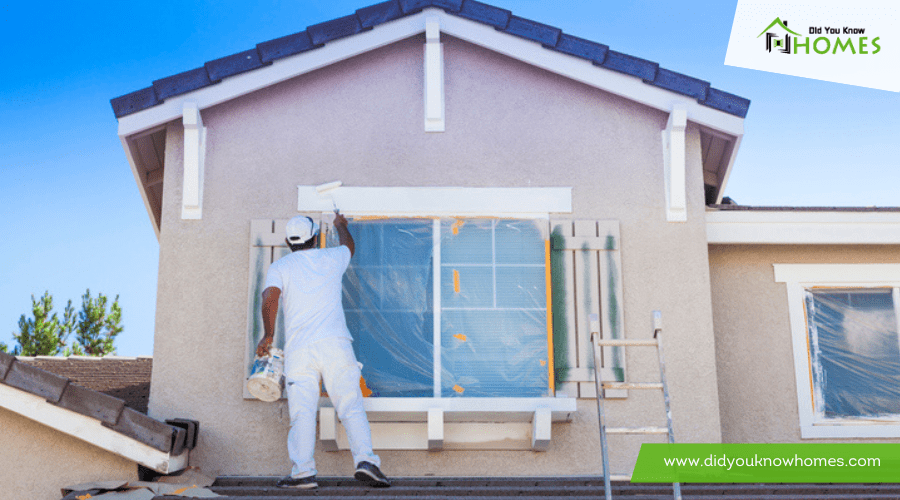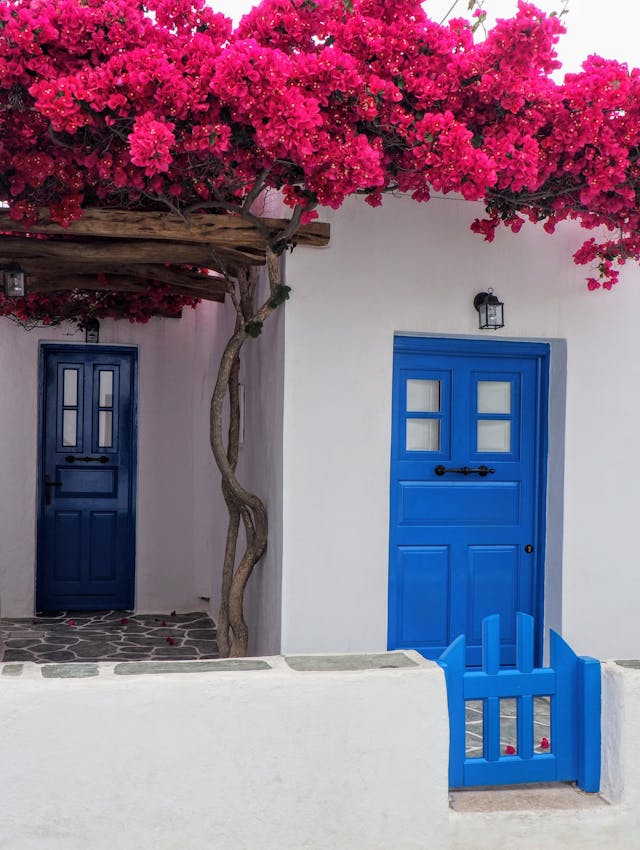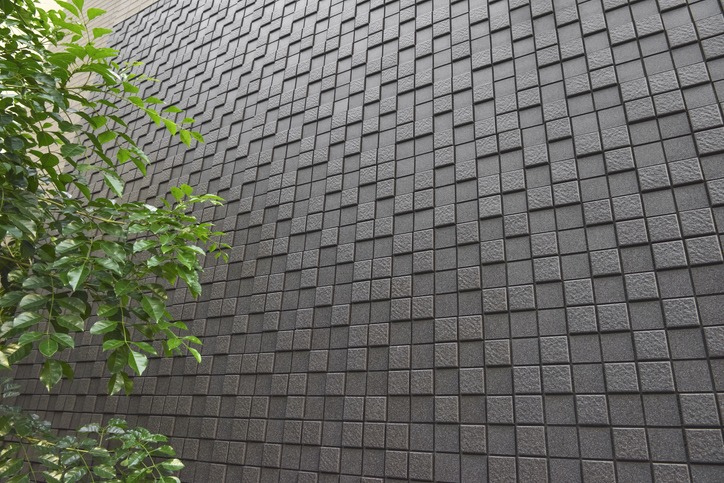Transform your home’s exterior into a standout masterpiece. Embrace vibrant doors to inject boldness, using colors like yellow or green for a unique touch that complements your home’s style. Mix and match color schemes harmoniously, considering the mood each hue evokes and the architectural details you want to highlight. Draw inspiration from nature, incorporating earthy tones for tranquility. Explore textures with techniques like sponging or rag rolling for added depth. Highlight architectural features with contrasting colors to create dimension. Each innovative approach not only enhances your home’s curb appeal but also reflects your personal style. Discover how these techniques can bring your vision to life.
Key Takeaways
- Experiment with faux finishes like sponging and rag rolling to add depth and uniqueness.
- Utilize stippling technique to create distinctive textures that enhance the home’s exterior.
- Incorporate contrasting colors to accentuate architectural details and add dimension.
- Apply layered paint effects for a complex and visually appealing exterior.
- Draw inspiration from nature, using earthy tones and seasonal colors for a tranquil and connected atmosphere.
Embracing Vibrant Doors
Embracing vibrant doors can immediately uplift your home’s exterior, making it a standout feature in your neighborhood. Imagine the boldness of a red or the calm of a deep blue adorning your front door. These colors not only enhance curb appeal but also create a striking focal point that draws eyes and admiration. Opting for shades like yellow and green can inject a unique touch, transforming the entrance into an inviting pathway.
Choosing a vibrant door color that complements your home’s architectural style adds personality and charm. Whether your home is modern, traditional, or somewhere in between, there’s a hue that perfectly matches its character. This strategic choice guarantees your exterior is not just about a splash of color but about creating harmony and enhancing the overall aesthetic.
Incorporating vibrant doors is more than just picking a color; it’s about making a statement. It’s a reflection of your style and a way to distinguish your home. So, go ahead and give your exterior that much-needed makeover. A vibrant front door is your first step towards an exterior that’s not only appealing but truly memorable.
Harmonious Color Schemes
After selecting a vibrant door, it’s time to contemplate harmonious color schemes that will unify your home’s exterior and enhance its allure. Harmonious color schemes are the secret ingredient to transforming your property’s exterior into a visually enchanting masterpiece. By carefully selecting colors that complement each other, you not only enhance the aesthetic appeal but also create a cohesive look that elevates your home’s curb appeal.
To achieve a harmonious exterior design, consider these key points:
- Evaluate your home’s architecture and surroundings to choose colors that complement its style.
- Mix and match shades that are next to each other on the color wheel for a subtle and elegant look.
- Incorporate contrasting colors sparingly to add interest and depth without overwhelming the visual appeal.
- Think about the mood you want to evoke. Soft, pastel colors can create a serene atmosphere, while bold, vibrant colors might project a more dynamic and energetic vibe.
- Use paint finishes strategically to highlight architectural details or downplay imperfections.
Drawing From Nature
Drawing inspiration from nature can greatly enhance your home’s exterior, offering a serene and harmonious color palette that seamlessly integrates with the surrounding landscape. By incorporating earthy tones like greens, browns, and blues, you’ll create a tranquil and inviting atmosphere that mirrors the beauty of the outdoors. Innovative painting techniques allow for the infusion of textures and finishes reminiscent of natural elements, such as wood, stone, or water, making your unique home exterior truly stand out.
To keep you intrigued and informed, here’s a quick guide:
| Nature Element | Painting Idea |
|---|---|
| Wood | Faux wood grain finishes |
| Stone | Stone-inspired accent walls |
| Water | Cool blue paint choices |
| Seasonal Changes | Adapt colors like warm oranges in fall or cool blues in summer |
| Earthy Tones | Greens, browns, and blues for a harmonious exterior |
Drawing from nature not only enhances the aesthetic appeal of your home but also promotes a sense of peace and connection to the environment. Embrace these innovative painting techniques to reflect the seasonal changes and textures of the natural world, ensuring your home’s exterior is as inviting as it is unique.
Exploring Textures
Explore the world of textures by experimenting with faux finishes like sponging, rag rolling, and stippling to bring life and depth to your home’s exterior. These painting techniques not only add texture but transform your home into a visually appealing masterpiece. By incorporating layered paint effects, you create depth that enhances the overall look, making your home stand out in the most unique way.
- Sponging adds a porous texture, mimicking natural stone or aged plaster for a rustic, yet sophisticated appearance.
- Rag rolling creates soft, fabric-like patterns, offering your exterior walls a dynamic, tactile experience.
- Stippling involves tapping the paintbrush against the wall to produce small, dotted textures that catch the light beautifully.
- Layered paint effects use multiple hues and techniques to achieve depth and complexity, enriching the visual interest of your home’s exterior.
- Exploring various painting methods allows you to customize the texture, ensuring a unique finish that reflects your personal style.
Architectural Highlighting
Building on your exploration of textures, consider how architectural highlighting can further accentuate your home’s unique features using strategic color contrasts. This method involves choosing accent colors that stand out against your main palette, drawing the eye to the architectural details that make your home special. It’s about paying close attention to the elements that give your home character—be it the trim, columns, or moldings—and using color to make them stand out.
By immersing yourself in contrasting shades, you create depth and dimension, transforming your home’s exterior into a visually appealing masterpiece. Think of it as adding layers of interest to your creative exterior. Whether it’s bold accent walls that catch the sunlight just right or metallic accents on window trims that gleam under the moonlight, the possibilities are endless.
Architectural highlighting isn’t just about aesthetics; it’s a declaration of your home’s identity. By showcasing its architectural features with carefully selected colors and start contrasts, you’re not just painting; you’re telling a story. This technique adds charm and character, ensuring your home stands out with style and sophistication. Immerse yourself in these paint ideas and watch as your home becomes the epitome of architectural beauty.
Frequently Asked Questions
How Do I Paint My House Exterior Like a Pro?
To paint your house exterior like a pro, start with surface preparation and choose colors wisely, considering the climate. Use high-quality paint, refine your technique, confirm ladder safety, focus on detail work, manage your time well, select the right equipment, and plan for cleanup.
How Much Does It Cost to Paint the Exterior of a 1500 Square Foot House?
Painting your 1500 sq ft house exterior costs $2,600-$5,300, considering color trends, sustainable paints, and weather. Factors like prep work, paint quality, and DIY vs professional affect costs, alongside time frame, maintenance, and finish options.
Is It Better to Paint Exterior With a Roller or Brush?
You’ll find that choosing between a roller or brush depends on your project’s needs. Consider spray painting for efficiency, select colors wisely, prep surfaces, use primer, and prioritize ladder safety for a durable, stunning finish.
Should You Paint Trim or Siding First?
You should paint your trim first, considering color contrast, trim materials, and weather. Selecting the right paint and application techniques after prep work guarantees quicker drying times, easier cleanup, and an aesthetically appealing finish with minimal color fading.
Conclusion
Now you’ve got the blueprint to transform your home’s exterior into a masterpiece. Embrace vibrant doors, pick harmonious color schemes, draw inspiration from nature, explore textures, and highlight architectural features. These innovative painting techniques not only boost curb appeal but mirror your unique style. So, seize your brushes, unleash your creativity, and let your home shine. It’s time to make a statement that resonates with every passerby. Your home’s exterior is now not just seen, it’s remembered.




